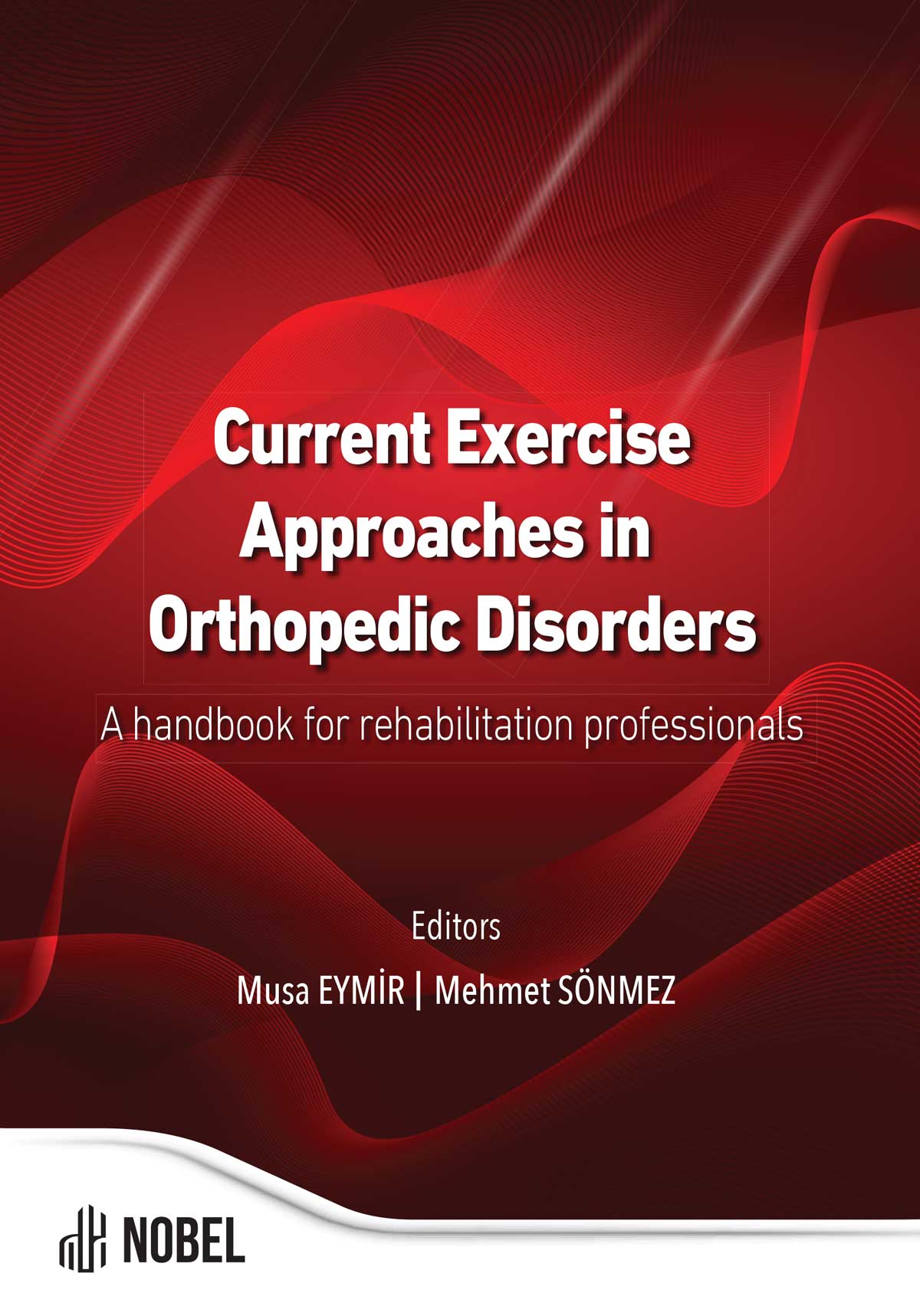Current Exercise Approaches in Foot and Ankle Pathologies
Muge Kirmizi (Author), Yasemin Apaydin (Author)
Release Date: 2024-01-18
The foot performs its main functions, including bearing body weight, shock absorption, adaptation to different ground surfaces, storage and return of elastic energy, and modifying its rigidity throughout gait, thanks to the arches present in its structure. In this section, the structures supporting the foot arches and their training are explained through the concept of [...]
Media Type
Buy from
Price may vary by retailers
| Work Type | Book Chapter |
|---|---|
| Published in | Current Exercise Approaches in Orthopedic Disorders A Handbook for Rehabilitation Professionals |
| First Page | 259 |
| Last Page | 283 |
| DOI | https://doi.org/10.69860/nobel.9786053358770.9 |
| Language | ENG |
| Page Count | 25 |
| Copyright Holder | Nobel Tıp Kitabevleri |
| License | https://nobelpub.com/publish-with-us/copyright-and-licensing |
Muge Kirmizi (Author)
Asst. Prof. Dr., Izmir Katip Celebi University
https://orcid.org/0000-0002-4550-4232
3The author received her undergraduate degree in Physical Therapy and Rehabilitation at Hacettepe University 2014, his master’s degree in Orthopedic Physiotherapy at Dokuz Eylül University in 2017, and his doctorate from the Department of Physical Therapy and Rehabilitation at Dokuz Eylül University in 2022.
The author worked as a Physiotherapist at different Special Education and Rehabilitation centers from 2014 to 2016. She started to study in academia in 2016 and as a Research Assistant at the School of Physical Therapy and Rehabilitation at Dokuz Eylül University between 2016 and 2020. In January 2020, she started to study as a Research Assistant at the Department of Physical Therapy and Rehabilitation at İzmir Kâtip Çelebi University. By July 2023, she was promoted to Assistant Professor Doctor within the same university and department, where she continues her professional academic life.
Yasemin Apaydin (Author)
Dr., Recep Tayyip Erdogan University
https://orcid.org/0000-0001-6630-2632
3She completed his bachelor degree at Baskent University in 2013. She completed his master of science (2016) and PhD (2021) in the Department of Physical Therapy and Rehabilitation at the Gazi University. Her field of master’s education is "Vestibular Disorders". She has focused on task-oriented training in vestibular disorders. She worked in Gazi University as a research assistant between 2014 and 2021. Now, she is working at Recep Tayyip Erdogan University as an post-doctoral researcher. She has high experience in clinics, academic publications, and international projects in the field of neurologic problems. She has 11 years of experience in the clinic and he still continues to support neurologic patients. She has specialized in neurologic disorders in academic activities such as book chapters, academic publications, and congress presentations. She gives undergraduate courses on rehabilitation of individuals with special needs. Her primary research focus is on "patients with Multiple Sclerosis" “vestibular rehabilitation” and “vestibular disorders”.
Boonchum, H., Bovonsunthonchai, S., Sinsurin, K., & Kunanusornchai, W. (2020). Effect of a home-based stretching exercise on multi-segmental foot motion and clinical outcomes in patients with plantar fasciitis. Journal of Musculoskeletal & Neuronal Interactions, 20(3), 411–420. http://www.ncbi.nlm.nih.gov/pubmed/32877978
Carek, P. J., Edenfield, K. M., Michaudet, C., & Nicolette, G. W. (2018). Foot and Ankle Conditions: Plantar Fasciitis. FP Essentials, 465, 11–17. http://www.ncbi.nlm.nih.gov/ pubmed/29381040
10.1186/s13643-024-02455-x
| onix_3.0::thoth | Thoth ONIX 3.0 |
|---|---|
| onix_3.0::project_muse | Project MUSE ONIX 3.0 |
| onix_3.0::oapen | OAPEN ONIX 3.0 |
| onix_3.0::jstor | JSTOR ONIX 3.0 |
| onix_3.0::google_books | Google Books ONIX 3.0 |
| onix_3.0::overdrive | OverDrive ONIX 3.0 |
| onix_2.1::ebsco_host | EBSCO Host ONIX 2.1 |
| csv::thoth | Thoth CSV |
| json::thoth | Thoth JSON |
| kbart::oclc | OCLC KBART |
| bibtex::thoth | Thoth BibTeX |
| doideposit::crossref | CrossRef DOI deposit |
| onix_2.1::proquest_ebrary | ProQuest Ebrary ONIX 2.1 |
| marc21record::thoth | Thoth MARC 21 Record |
| marc21markup::thoth | Thoth MARC 21 Markup |
| marc21xml::thoth | Thoth MARC 21 XML |

